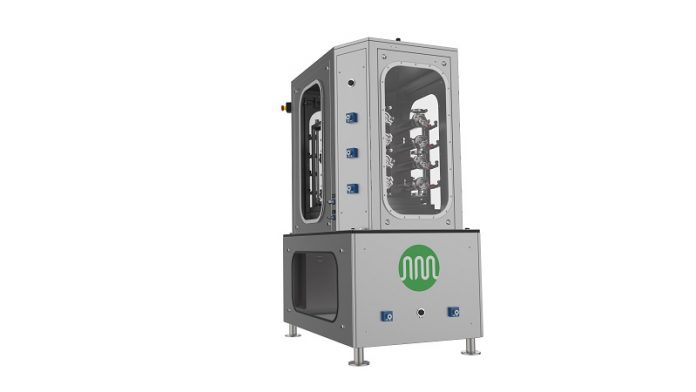The Grignard reaction is a highly prominent process to form carbon-carbon bonds. This organometallic reaction involves the addition of an alkyl, allyl, vinyl or aryl-magnesium halide (known as the Grignard reagent) to the carbonyl group of an aldehyde or ketone. Grignard reagents are highly reactive and both air- and moisture-sensitive thus making it preferential to form the reagent shortly before any subsequent Grignard reaction.
To successfully translate Grignard reactions from batch to flow, it is therefore desirable to form the Grignard reagent in-situ through reaction of magnesium powder with the desired organic halide. This therefore results in the requirement of a flow reactor to be able to handle a heterogenous magnesium slurry over extended run times with accurate dosing of the magnesium into the flow reactor.
Internal testing performed by chemists at AM Technology has looked to assess the solids handling limits of simple peripheral equipment such as peristaltic pumps with respect to Coflore® systems, specifically towards magnesium slurry handling, with a view to indicating suitability for Grignard reaction applications. The ability to successfully dose in a 10 wt% slurry of magnesium powder in petroleum-ether through a Coflore ATR using only a standard peristaltic pump has been validated, and summarised in technical note AMT TN-09 available for download from the AM Technology website technical notes section here.
When handling solids in flow, it is important to appreciate that the larger the ID of the pump tubing, the slower the fluid velocity is to achieve a certain flowrate. This can have large implications as to whether the solid remains suspended or settles out in the reagent transfer lines. For the testing performed at AM Technology, standard LS18 Masterflex tubing was used, which has an ID of 7.9mm.
With a simple equipment set up, the team were able to successfully recirculate a 10 wt% slurry through the Coflore ATR without blocking or noticeable accumulation at flow rates of 700 mL/min and 1,000 mL/min which equates to 10-minute and 14.4-minute residence times in a 10 L Coflore ATR system (for the purposes of this testing, a 1.6 L ATR system was used to minimise volumes required). Furthermore, the team were able to shut down the system overnight whilst full, allowing the suspension to fully settle out, and then restart the system, successfully re-suspending the slurry, highlighting the vital importance of the mechanical agitation employed by the Coflore ATR in solids handling in flow.
For further information on the solids handling ability of Coflore flow reactor systems, please contact info@amt.uk.









